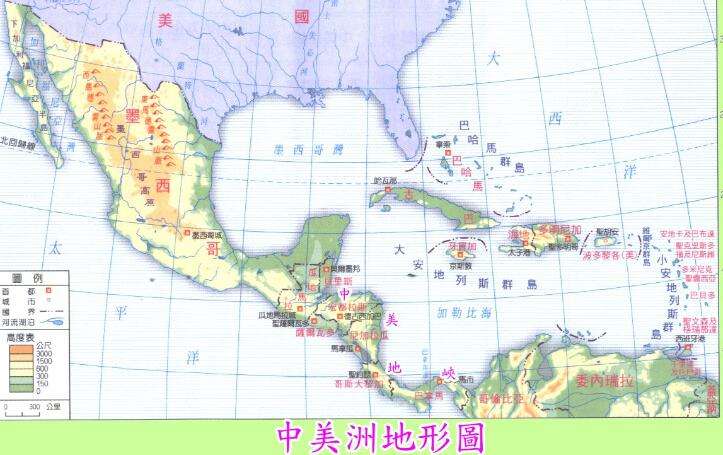Learn more about the description of Central American boutique coffee on the coffee map.
Central America is a land bridge connecting North and South America. There are seven countries, namely, Belize, Costa Rica, El Salvador, Guatemala, Honduras, Nicaragua and Panama. Seven Central American countries all produce coffee, with Guatemala, Costa Rica and Honduras among the top 10 coffee exporters in the world.
Coffee originated in Central America in the 18th century, and this important economic product originated in Costa Rica around 1840. Since Central America became independent from Spain in 1821, wars have continued. Because Costa Rica was far away from the Spanish colonial capital of Guatemala, it was not affected by the civil war. On the contrary, the production of coffee in Guatemala and El Salvador was delayed because of the civil war. After that, the political dispute gradually subsided, and with the exception of Honduras, Central American countries began to produce coffee in the 19th century.
Central America has the natural advantages of sunshine, land, and mountains, and an abundant working population, which makes the region unique in growing and producing high-quality coffee. In the late 19th century, coffee had become an indicator of economic growth in Central American countries, and all Central American countries passed a bill to promote coffee. The most remarkable results have been achieved in countries such as Costa Rica El Salvador and Guatemala coupled with the scientific and technological way of growing coffee making Central America one of the four largest coffee producing regions in the world.

Important Notice :
前街咖啡 FrontStreet Coffee has moved to new addredd:
FrontStreet Coffee Address: 315,Donghua East Road,GuangZhou
Tel:020 38364473
- Prev

An important detail on the World Coffee Map about the great Ethiopian boutique coffee manor
Ethiopia is a country in northeast Africa. Although it is listed as one of the least developed countries in the world, it also produces one of the best coffee in the world. It is said that coffee was first discovered by shepherds in Essekafa, and the name of coffee evolved from Kafa, so Ethiopia is still the hometown of coffee from this point of view. In Ethiopia
- Next

In-depth understanding of Costa Rica's seven major producing areas Costa Rica Coffee Manor introduction
The seven main coffee producing areas in Costa Rica are distributed from northwest to southeast along with the inland central plateau. Costa Rican volcanic terrain with fertile volcanic ash, mild and suitable temperature, and stable and abundant rainfall is one of the reasons why coffee has become one of the main agricultural products in Costa Rica. As the coffee industry in Colombia began to develop since the middle of the 18th century, coffee was first introduced into Central America.
Related
- Does Rose Summer choose Blue, Green or Red? Detailed explanation of Rose Summer Coffee plots and Classification in Panamanian Jade Manor
- What is the difference between the origin, producing area, processing plant, cooperative and manor of coffee beans?
- How fine does the espresso powder fit? how to grind the espresso?
- Sca coffee roasting degree color card coffee roasting degree 8 roasting color values what do you mean?
- The practice of lattes: how to make lattes at home
- Introduction to Indonesian Fine Coffee beans-- Java Coffee producing area of Indonesian Arabica Coffee
- How much will the flavor of light and medium roasted rose summer be expressed? What baking level is rose summer suitable for?
- Introduction to the characteristics of washing, sun-drying or wet-planing coffee commonly used in Mantenin, Indonesia
- Price characteristics of Arabica Coffee Bean Starbucks introduction to Manning Coffee Bean Taste producing area Variety Manor
- What is the authentic Yega flavor? What are the flavor characteristics of the really excellent Yejasuffi coffee beans?

